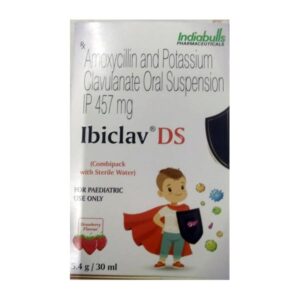CLAVULANIC ACID + AMOXICILLIN
Clavulanic Acid: Clavulanic acid is a medication that is commonly used in combination with certain antibiotics, specifically penicillin antibiotics, to enhance their effectiveness against certain bacterial infections. It is an irreversible inhibitor of beta-lactamase enzymes, which are produced by some bacteria to resist the action of antibiotics. By inhibiting the beta-lactamases, clavulanic acid helps to prevent the breakdown of the antibiotic, allowing it to remain active and kill the bacteria more effectively.
The usual dose of clavulanic acid is in combination with an antibiotic such as amoxicillin or ticarcillin. The specific dose depends on the particular antibiotic being used and the severity of the infection. It is typically taken orally, either as a tablet or a liquid suspension.
Like any medication, clavulanic acid can cause side effects. Common side effects may include diarrhea, nausea, vomiting, stomach pain, and skin rash. In rare cases, more serious side effects such as allergic reactions (difficulty breathing, swelling of the face or throat) or severe skin reactions may occur. It is important to consult a healthcare professional if any side effects are experienced.
Overall, clavulanic acid is an important medication in the treatment of bacterial infections. It helps to improve the effectiveness of certain antibiotics and can be a valuable addition to antibiotic therapy. It is important to use clavulanic acid as directed and to complete the full course of antibiotic treatment as prescribed by a healthcare professional.
Amoxicillin: Amoxicillin is a commonly used antibiotic belonging to the penicillin class of drugs. It is primarily used to treat bacterial infections, including respiratory infections, ear infections, urinary tract infections, and skin infections.
The mechanism of action of amoxicillin involves inhibiting the growth of bacteria by targeting their cell wall synthesis. It does this by interfering with the formation of the bacterial cell wall, leading to weakening and eventual rupture of the cell.
The recommended dose of amoxicillin varies depending on the type and severity of the infection, as well as the age and weight of the patient. Typically, it is taken orally in the form of capsules or tablets, which should be swallowed whole with a full glass of water. It is important to follow the specific instructions provided by the prescriber or pharmacist and complete the full course of treatment even if symptoms improve.
Common side effects of amoxicillin may include nausea, vomiting, diarrhea, abdominal pain, and skin rash. These side effects are usually mild and resolve on their own. However, if any severe or persistent side effects occur, it is important to consult a healthcare professional.
It is worth noting that allergic reactions to amoxicillin can occur, ranging from mild skin rashes to severe hypersensitivity reactions like anaphylaxis. In cases of a known allergy to penicillin or a history of severe allergic reactions, amoxicillin should be avoided, and an alternative antibiotic should be prescribed. It is important to inform the healthcare provider about any known allergies or medical conditions before starting amoxicillin.


